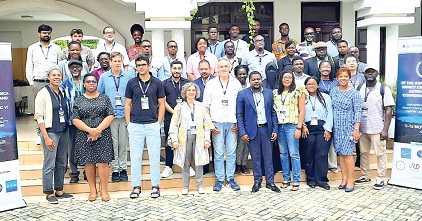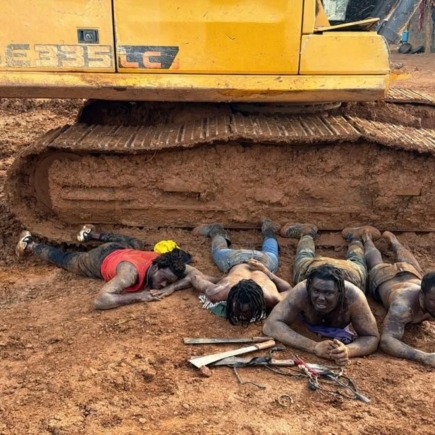More than 60,000 hectares of forest land, equivalent to 84,000 football fields, have been destroyed by illegal mining activities in southern Ghana alone in the last 17 years, remote sensing data from the Ghana Space Science and Technology Institute (GSSTI) has revealed.
The Director of the institute, Dr Joseph Tandoh, who made this known to the Daily Graphic, said the scale of destruction posed dire environmental consequences for the country, and as such needed to be addressed urgently.
"These 60,000 hectares is limited to the southern part of the country spanning across the Ashanti, Western, Western-North and other regions.
The scale of destruction caused to forest lands by galamsey across the country could be more; but we need to do some field work to ascertain it," he said.
Dr Tandoh spoke to the Daily Graphic on the sideline of the 5th edition of the Arab and Africa Impact Cratering and Astrogeology Conference (AICAC V) which opened at the University of Ghana last Monday.
The conference was put together by the Department of Earth Science of the University of Ghana in collaboration with the African Initiative for Planetary and Space Sciences.
Restoration policies
The GSSTI Director stressed that given the critical role forests played in terms of essential ecosystem services, the right policies must be rolled out immediately to help restore the degraded forest lands.
Dr Tandoh said the seriousness of the destruction being caused by illegal mining activities required the government to give priority to the implementation of the Tree for Life Afforestation programme meant to reclaim the country’s degraded forest landscape.
"Anytime government puts in policies, the graph on the extent of destruction being caused by illegal mining goes down, but when things are allowed to slide, it goes up again.
"As a country, we have to manage the forest for ourselves and the future generations; but if we keep cutting trees without replanting them, we are doomed," he said.
Again, Dr Tandoh said there was the need to plant more trees to create carbon sinks instead of cutting them down and destroying the environment through galamsey.
He also stressed that apart from planting trees, effort must be made to geo-tag them to be able to monitor their progress from time to time.
“If we say we have planted 50 million trees, we need to be able to tell where those trees are, how many survived, and how they are doing.
We can do this through technology,” the GSSTI Director said.
Dr Tandoh also said research done by GSSTI had revealed that the country was losing about 1.3 metres of its coastline every year.
He underscored the need for the appropriate technology and approaches to be adopted to salvage the situation.
“It must be looked at holistically instead of tackling it in silos.
The sea defence approach is an option, but the point is that if you do sea defence, you are blocking the water from going through one point but it will go through another point,” Dr Tandoh said.
He said there must be collaboration with other coastal countries for a comprehensive solution.
Dr Tandoh added that the country had made progress in the space journey, but added that the efforts would have to be enhanced going forward.
“We have a space policy already, and this year, Cabinet also approved the establishment of the space agency to coordinate all activities.
We are currently looking at developing
a space bill to regulate how we operate as a country,” he said.
Capacity building
A Senior Lecturer at the Department of Earth Science, University of Ghana, Dr Marian Selorm Sapah, in a presentation said the AICAC V had provided an opportunity to leverage the potential of space science for development.
She said the idea was to build capacity in planetary and space science across Africa, especially in the area of education and research.
Dr Sapah added that planetary science was useful to society in many ways, ranging from remote sensing, agriculture, climate change studies and other fields.
“Planetary science is important and all over the world, everyone is getting interested, so we cannot be left behind.
We should make use of it to better our lives,” she said.
The Earth Scientist also said although GSSTI was the mandated institution in the country to make policies relating to the space sector, earth scientists would support by contributing research and understanding on space to help them make informed policies.


